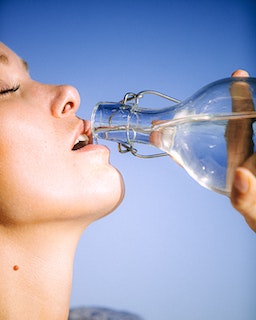How to distill water at home, DIY!

Water distillation is a reliable and effective method for purifying water, removing impurities, contaminants, and potentially harmful substances. If you’re looking to purify water at home using a do-it-yourself (DIY) approach, this step-by-step guide will walk you through the process of building a simple water distillation setup. By following these instructions, you can produce clean, purified water for drinking and other household uses.
Materials that you will need for this experiment
- Large stainless steel pot with a tight-fitting lid
- Heat-resistant glass or stainless steel bowl
- Heat-resistant silicone tubing
- Glass or heat-resistant plastic jug
- Ice or cold water
- Heat source (stove or electric hot plate)
- Thermometer
- Teflon tape (optional, for sealing connections)
- Water source (preferably tap water)
Step 1: Assemble the Distillation Apparatus
- Firstly, place the large stainless steel pot on the heat source (stove or electric hot plate). Ensure it is stable and heat-resistant.
- Secondly, fill the pot with tap water, leaving some space below the rim to prevent overflow.
- Thirdly, position the heat-resistant glass or stainless steel bowl inside the pot, ensuring it floats on the water surface without touching the pot’s bottom.
- Subsequently, attach one end of the silicone tubing to the lid of the pot, creating an airtight seal. If needed, use Teflon tape to secure the connection.
- Lastly, run the other end of the tubing from the pot’s lid into the glass or heat-resistant plastic jug, which will collect the distilled water.
Step 2: Start the Distillation Process
- To start, place the pot’s lid securely on top of the pot, making sure it fits tightly.
- Then, fill the lid with ice or cold water. This will create a condensation effect when the steam rises and comes into contact with the cold surface.
- After that, turn on the heat source and gradually increase the temperature to bring the water in the pot to a gentle boil.
- As the water boils, steam will rise, condense on the cold lid, and drip into the connected tubing, eventually collecting in the jug as distilled water.
Step 3: Monitor the Distillation Process
The following are some things to take note of during the distillation process:
- Use a thermometer to monitor the temperature of the steam and the water in the pot. Ideally, the steam temperature should be between 100 to 110 degrees Celsius (212 to 230 degrees Fahrenheit).
- Adjust the heat source if necessary to maintain a consistent temperature and avoid boiling the pot dry.
- Keep an eye on the water level in the pot and ensure it doesn’t drop too low. If needed, add more water to the pot during the distillation process.
It is crucial that you take note of these tips in order to have a smooth sailing distillation process!
Step 4: Collect and Store the Distilled Water
- Allow the distillation process to continue until you’ve collected the desired amount of distilled water in the jug. This may take several hours depending on the quantity of water you’re distilling.
- Carefully remove the jug from the tubing and set it aside.
- Let the distilled water cool before transferring it to clean, sterile containers for storage.
- Store the distilled water in a cool, dark place away from direct sunlight to maintain its purity.
Conclusion
With this DIY water distillation guide, you can create a simple setup to purify water at home. Remember to use caution when handling hot surfaces and boiling water. DIY water distillation offers an accessible and effective method to obtain clean, purified water for drinking and other household purposes. By following these step-by-step instructions, you can enjoy the benefits! However, this method can be time consuming to set up and constantly monitor, so it is highly recommended that you purchase a water distiller instead, saving lots of time in the long run!
